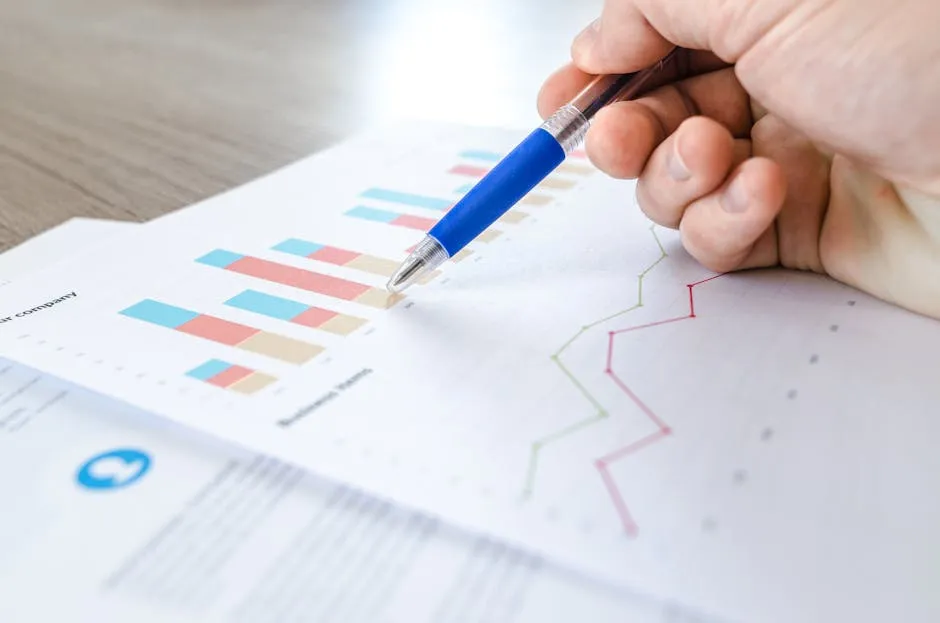Introduction
Statistical consulting is the art of transforming muddled data into clear insights. In research and business, it plays a critical role. Imagine embarking on a treasure hunt without a map. That’s what analyzing data without a consultant feels like! Statistical consultants guide clients through the labyrinth of numbers, ensuring accuracy and clarity.
These experts offer a variety of services. They assist with experimental design, data analysis, and statistical modeling. Whether you’re a student crafting a thesis or a business seeking market insights, statistical consultants have your back. Their expertise spans across fields, making them invaluable in diverse industries.
If you’re looking to deepen your understanding of data science, consider grabbing a copy of R Programming for Data Science by Hadley Wickham. This book serves as a fantastic introduction to R, the programming language that’s taking the data science world by storm. It’s perfect for beginners and seasoned analysts alike!

Data analysis is a crucial aspect of statistical consulting, helping clients make informed decisions. tips for effective data analysis in economics and statistics
The demand for statistical consulting is soaring. From academia to healthcare and private sectors, organizations increasingly rely on data-driven decision-making. As data becomes the new oil, the need for skilled consultants grows. This article aims to demystify statistical consulting. We’ll cover its processes, benefits, and offer tips on selecting the right consultant for your needs.
What is Statistical Consulting?
Definition and Scope
Statistical consulting involves providing expert advice on the use and interpretation of data. It’s more than just crunching numbers; it’s about understanding the context and implications of data. Consultants work closely with clients to identify research questions, design experiments, and analyze results.
Various fields utilize statistical consulting. In healthcare, for instance, it helps assess treatment efficacy through clinical trials. The social sciences leverage it to analyze survey data, while businesses employ statistical methods for market research. Each sector benefits from the insights gained through statistical consulting.
In essence, statistical consulting bridges the gap between data and actionable insights. It empowers clients to make informed decisions based on solid statistical evidence. Whether it’s predicting trends or evaluating outcomes, consultants play a pivotal role in navigating the complex world of data analysis.
Importance of Statistical Consulting
Statistical consulting is essential for making data-driven decisions. Whether you’re a researcher or a business leader, understanding your data can lead to breakthroughs. Imagine trying to bake a cake without a recipe. That’s how chaotic data analysis can feel without expert guidance!
Statistical consultants transform complex numbers into actionable insights. They help researchers design experiments and analyze results, ensuring the findings are reliable. For businesses, these experts refine strategies, optimize operations, and boost profits.
For those who want to dive deeper into analytics, Python for Data Analysis by Wes McKinney is a must-read. This book provides a comprehensive introduction to data analysis using Python, making it essential for anyone looking to harness the power of data!

Consider a pharmaceutical company conducting clinical trials. A statistical consultant can design the study, ensuring it adheres to regulatory standards. This careful planning increases the chances of successful outcomes, ultimately leading to life-saving treatments.
In another example, a retail business might seek help with market analysis. A consultant can identify customer preferences through data analysis, guiding product development and marketing strategies. This data-backed approach can significantly enhance sales and customer satisfaction.
Thus, statistical consulting plays a pivotal role in shaping research outcomes and business strategies. By harnessing the power of data, organizations can make informed, strategic decisions that propel them forward.
Types of Statistical Consulting Services
Academic Consulting
Academic consulting focuses on assisting students and researchers. Services include thesis supervision, experimental design, and data analysis. These consultants help transform academic ideas into well-structured projects.
Programs like TUM|Stat and StaBLab offer tailored services for students. TUM|Stat, linked with the Technical University of Munich, provides comprehensive support. They assist with designing experiments, analyzing data, and even supervising master’s theses. Their goal is to help students navigate the intricacies of statistical methods.

For those looking to brush up on statistical concepts, The Art of Statistics: Learning from Data by David Spiegelhalter is a fantastic resource. This book demystifies the world of statistics, making it accessible and engaging for everyone!
Similarly, StaBLab, part of Ludwig-Maximilians-Universität, specializes in student support. They focus on interdisciplinary collaboration, aiding students with statistical questions related to their theses. Their extensive experience with various institutions makes them a valuable resource for anyone in academia.
Corporate Consulting
Corporate consulting caters to businesses seeking data-driven insights. Services cover market analysis, quality control, and predictive modeling. Companies can leverage statistical methods to improve decision-making and operational efficiency.
For instance, AMSTAT Consulting offers corporate services that help organizations analyze market trends. Their team of experts provides valuable insights, guiding businesses in strategic planning. By utilizing advanced statistical techniques, companies can stay ahead of the competition.

Additionally, if you’re interested in a foundational text, check out Naked Statistics: Stripping the Dread from the Data by Charles Wheelan. This book makes statistics fun and easy to understand, perfect for those who might find the subject daunting!
Additionally, firms like Novustat provide comprehensive consulting tailored to corporate needs. They support businesses in designing experiments, evaluating statistics, and even graphical representation of analyses. This customized approach ensures companies receive the precise assistance they require.
In essence, both academic and corporate consulting services are crucial. They empower students and businesses alike to harness the power of data, leading to informed decisions and successful outcomes.

The Process of Statistical Consulting
Initial Consultation
The initial consultation sets the stage for successful collaboration. It’s the time to establish rapport and understand client needs. Consultants often start with open-ended questions to gauge the client’s objectives. What’s the project about? What are the expected outcomes?
During this phase, consultants assess the client’s data literacy. Are they familiar with statistical methods? This helps tailor the consulting approach. Setting clear objectives is crucial. Clients should leave with a sense of direction and a checklist of what’s next. This initial meeting is like an appetizer; it whets the appetite for what’s to come!

Data Collection and Preparation
Data collection is the backbone of statistical consulting. But wait—before jumping in, let’s talk about the significance of data cleaning. Nobody likes a cluttered desk, and similarly, messy data clouds analysis. As highlighted by STAT-UP, data must be structured correctly for meaningful insights.
Tools like R and Python are popular for data management. These programming languages allow for efficient data manipulation and visualization. Think of them as a Swiss Army knife for statisticians!
If you want to get started with Python, grab a copy of Data Science from Scratch: First Principles with Python by Joel Grus. This book is an excellent way to learn Python and data science fundamentals!

Consultants also employ methodologies that ensure data integrity. This includes checking for outliers, handling missing values, and standardizing formats. A clean dataset is like a well-tuned engine; it’s ready to drive insights forward.
Data Analysis and Interpretation
Once the data is ready, it’s time for analysis. Consultants often lean on various statistical methods. Regression analysis helps understand relationships between variables. Want to predict sales based on advertising spend? Regression is your friend!
Another common technique is Analysis of Variance (ANOVA). This method compares means across different groups, answering questions like, “Do different marketing strategies yield varying results?”
But it’s not just about crunching numbers. Interpreting results is equally vital. A consultant doesn’t just present findings; they also translate them into actionable insights. This is where the magic happens! Clients walk away not only with data but also with stories that inform decision-making.

If you’re curious about the statistical methods behind data analysis, consider Statistical Methods for the Social Sciences by Alan Agresti. This book provides essential insights into statistical techniques used across various fields.
In summary, the process of statistical consulting is a structured journey. From the initial consultation to data analysis, each step is crucial for driving valuable insights. Embracing this structured approach ensures that clients receive the best possible guidance on their data-driven endeavors.

Reporting and Follow-Up
The final reporting stage is crucial in statistical consulting. It’s when the consultant wraps up their analysis and presents their findings. This stage isn’t just about throwing numbers at clients; it’s about storytelling! Imagine reading a mystery novel that suddenly ends without revealing the killer. Frustrating, right? Similarly, clients need clarity on what the data means for their goals.
Consultants typically prepare a detailed report. This report outlines the statistical methods used, the results obtained, and the implications of these results. It’s like a highlight reel that showcases what happened during the data analysis. The aim is to make the data comprehensible, turning complex statistics into actionable insights.

To enhance your reporting skills, consider reading Practical Statistics for Data Scientists: 50 Essential Concepts by Peter Bruce. This book provides practical insights into applying statistics in data science!
Presentations often accompany the reports. Consultants might use visuals, like graphs or charts, to illustrate findings. A picture is worth a thousand words, especially when it comes to data. These visuals make it easier for clients to grasp the significance of the results.
But the process doesn’t stop there! Follow-up consultations are equally important. They ensure that the findings are not just shelved but actually implemented. Think of it as a post-game analysis. How did the team perform? What adjustments are needed for next time?
During follow-ups, consultants can help clients interpret the results in context. They can address any questions or concerns that might arise after the initial report. This collaborative approach fosters a deeper understanding of how to act on the insights gained. After all, the ultimate goal is to drive success based on data.
In short, effective reporting and diligent follow-up consultations are vital for translating statistical findings into successful strategies. This ensures that clients don’t just have data but also a clear path forward based on that data.

Enhanced Decision-Making
Statistical consultants do more than just crunch numbers. They provide valuable insights that can significantly enhance decision-making processes. Picture this: a business is considering launching a new product. Instead of guessing customer preferences, they hire a consultant. The consultant analyzes market data, identifies trends, and presents findings. Suddenly, the business isn’t just throwing darts in the dark; they have a clear target!
For instance, consider a healthcare organization looking to improve patient care. They partnered with a statistical consultant who analyzed patient feedback and treatment outcomes. The consultant discovered patterns indicating that certain treatments were more effective for specific demographics. Armed with these insights, the healthcare provider revamped their treatment plans. As a result, patient satisfaction soared, and overall health outcomes improved.

Another impressive case comes from a retail company that faced declining sales. They engaged a statistical consulting firm to conduct an in-depth analysis of customer buying behaviors. The consultant employed advanced techniques like regression analysis and clustering to segment the customer base. The outcome? The retail chain tailored its marketing strategies to resonate with different customer segments. Sales rebounded, proving that data-driven decisions can turn the tide for struggling businesses.
In academia, statistical consultants also play a pivotal role. Researchers often seek their expertise to navigate complex data sets for studies. One notable example involves a university partnering with a statistical consulting service for a large-scale education study. The consultants helped design the study and analyze the data. The findings revealed critical insights about student performance and engagement, leading to program adjustments that enhanced learning outcomes.
These examples underscore the power of data-driven decision-making. By leveraging statistical consulting, organizations can transform raw data into actionable strategies. Whether in healthcare, retail, or academic research, the insights provided by consultants lead to improved outcomes and long-term savings. It’s clear: when it comes to making informed decisions, statistical consultants are invaluable allies.
Please let us know what you think about our content by leaving a comment down below!
Thank you for reading till here 🙂
All images from Pexels




